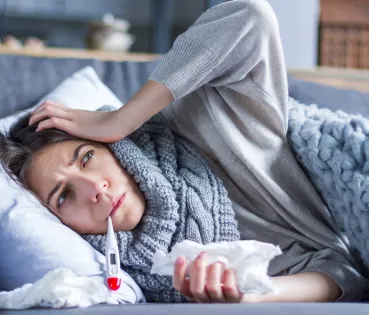
The benefits of vigorous physical exercise
The most intensive activities, the ones that speed your heart rate up, are three times more effective for improving a person’s physical condition than simply walking and reaching the recommended 7,000 steps a day.
Carrying out a physical activity is one of the most common recommendations for improving quality of life and prolonging a state of well-being, both physical and mental. The WHO recommends it because it brings important benefits for heart health and it helps to prevent and control non-transmissible diseases, such as strokes, diabetes and several types of cancer. It also helps to prevent high blood pressure, to maintain a healthy body weight and it can even improve mental health. The data from the World Health Organisation indicates that people who are not active enough have between a 20% and 30% higher risk of death in comparison with those who are sufficiently active. But what happens with the people who carry out excessive exercise? Is it healthy to carry out a vigorous physical exercise? Is high intensity training recommendable?
The Faculty of Medicine of the University of Boston has just published a report to answer these questions. With a large-scale study carried out with the participation of over 2,000 people, the results indicate that vigorous exercise improved the physical condition more than when a light activity is carried out. Published in the European Heart Journal, the conclusions point towards the fact that the most vigorous activities, those that speed up the heart rate, are three times more effective for improving physical condition than simply walking and reaching the recommended 7,000 steps a day.
The first premise of the study looked to answer whether it was possible to compensate a sedentary day (eight hours sitting in front of the computer) with a subsequent sessionof vigorous exercise. That is to say, whether going from almost no activity to vigorous exercise was recommendable and healthy. The results indicated that yes, it is possible to compensate the damage caused by a sedentary lifestyle over the day with an increase in physical activity and exercise at other times. And it adds that these subjects enjoy a better performance and a physical condition that is above the normal average. Additionally, it discovers that those who have exercised intensely in the past also enjoy a higher level of well-being in the present. “We have seen that the participants with high activity rates at the beginning, but low activity levels around 8 years later, have equivalent levels of physical aptitude. This suggests that there might be a memory effect of physical activities in the past that are reflected in the current physical aptitude rate,” Matthew Nayor, a doctor in cardiology and the professor in charge of directing the study explains.
For the people who, for different reasons cannot exercise vigorously, the study endorses the fact that light activity also improves physical condition, although it emphasises that to reach an excellent condition of fitness, it is three times more effective doing at least one vigorous exercise than simply being a person who walks a lot or always opts for using the stairs instead of the lift.
Are you fit?
To evaluate in depth the fitness of a person it is necessary to analyse several parameters, but there are two simple exercises for self-evaluation and to obtain a first valid answer. The first consists of sitting down and getting up ten times from the same chair, without using your arms, exercising the lower trunk, as fast as possible. For those under the age of 35 years, completing this exercise in less than 10 seconds is considered optimum for men and 12 seconds in the case of women. Up to the age of 55 years, women should complete this exercise in less than 15 seconds, while 13 seconds is the time estimated for men. After these ages, the maximum time for men is 18 seconds and 19 seconds for women. The second physical self-evaluation exercise consists of analysing fatigue. To do this, the aerobic capacity needs to be tested and discovering how the lungs and the heart respond to this effort. To do this, you must stand in go up and down a step during three minutes, quickly and constantly. Once finished, the pulse must be measured to discover the fitness condition. Women under 35 years of age must show some results of a pulse rate below 110 per minute, while 105 is the correct rate for men. Up to the age of 55 years, a pulse rate of 115 per minute would indicate good fitness in women, and 110 in the case of men. After these ages, the pulse rate commended for women should not exceed 120 per minute, while men should be under 115 per minute after three minutes of continuous exercise.




